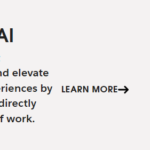AI is being used in a variety of ways to lower costs and increase access to healthcare. Some examples include:
Automating administrative tasks
Automating administrative tasks with AI can help healthcare organizations reduce costs and improve efficiency. Some specific ways that AI can be used to automate administrative tasks include:
- Appointment scheduling: AI-powered chatbots or virtual assistants can help patients schedule appointments with doctors or other medical professionals. This can reduce the need for human staff to handle scheduling and improve patient access to care.
- Insurance claims processing: AI can be used to automate the process of processing insurance claims. This can help reduce the time and effort required to process claims and improve the accuracy of claims processing.
- Medical records management: AI can be used to automatically organize and categorize medical records. This can make it easier for doctors and nurses to find the information they need, reducing the time and effort required to manage records and improve patient care.
- Billing and coding: AI can be used to automate the process of billing and coding, which can help reduce errors and speed up the process of getting reimbursed for services.
Overall, automating administrative tasks with AI can help healthcare organizations operate more efficiently and reduce costs, which can improve patient access to care and overall healthcare outcomes.
Assisting with medical diagnoses
AI can assist with medical diagnoses in several ways. Some examples include:
- Image analysis: AI-powered systems can analyze medical images, such as X-rays, CT scans, and MRIs, to help doctors and radiologists identify potential issues. For example, AI algorithms can be trained to identify patterns in medical images that are indicative of certain conditions, such as cancer or heart disease.
- Medical diagnosis support: AI can assist doctors by providing a list of likely diagnoses based on the patient’s symptoms, medical history, and other data. This can help doctors make more accurate diagnoses and improve patient outcomes.
- Predictive analysis: AI can analyze large amounts of data, such as electronic health records, to identify patterns that indicate an increased risk of certain conditions. For example, AI can analyze patient data to identify individuals who are at risk of developing diabetes or heart disease, which can help doctors intervene early and prevent more serious health problems.
- Natural language processing: AI can also assist doctors in understanding and interpreting medical reports, and other data by using natural language processing (NLP) techniques.
Overall, AI-assisted medical diagnoses can help improve the accuracy of diagnoses, reduce the time and effort required to make a diagnosis and improve patient outcomes.
Identifying at-risk patients
AI can be used to identify at-risk patients by analyzing large amounts of patient data, such as electronic health records (EHRs), demographic data, and genetic data. Some examples of how AI can be used to identify at-risk patients include:
- Predictive modelling: AI can analyze patient data to identify individuals who are at high risk of developing certain conditions, such as heart disease or diabetes. This can help doctors intervene early and prevent more serious health problems.
- Risk stratification: AI can be used to categorize patients into different risk groups based on their likelihood of developing certain conditions. This can help healthcare providers prioritize care and allocate resources more effectively.
- Early warning systems: AI can be used to monitor patient data in real-time and alert doctors and nurses when a patient’s condition starts to deteriorate. This can help healthcare providers intervene early and prevent adverse outcomes.
- Disease management: AI can be used to help patients manage chronic conditions, such as diabetes, by providing personalized recommendations for treatment, monitoring progress, and alerting the healthcare provider if there is a change in the patient’s condition.
Overall, identifying at-risk patients using AI can help healthcare providers intervene early and prevent more serious health problems from developing, which can lead to better patient outcomes and lower healthcare costs.
Improving drug development
AI can be used to improve drug development in several ways, including:
- Target identification: AI can be used to analyze large amounts of data, such as genetic data and information about disease pathways, to identify new drug targets. This can help pharmaceutical companies develop new drugs to treat diseases that were previously difficult to treat.
- Virtual screening: AI can be used to simulate how different compounds interact with potential drug targets. This can help researchers identify which compounds are most likely to be effective drugs and prioritize them for further testing.
- Drug repurposing: AI can be used to analyze data on existing drugs to identify new uses for them. This can help pharmaceutical companies develop new treatments for diseases more quickly and at lower cost than developing new drugs from scratch.
- Clinical trial optimization: AI can be used to analyze data from clinical trials to identify patterns that indicate which patients are most likely to respond to a particular drug. This can help pharmaceutical companies conduct more efficient and cost-effective clinical trials.
Overall, using AI in drug development can help pharmaceutical companies identify new drug targets, prioritize compounds for further testing, and optimize clinical trials, which can lead to the development of new and more effective treatments for diseases at lower costs.
Also Check : OpenAI Launches ChatGPT Plus Subscription Plan




